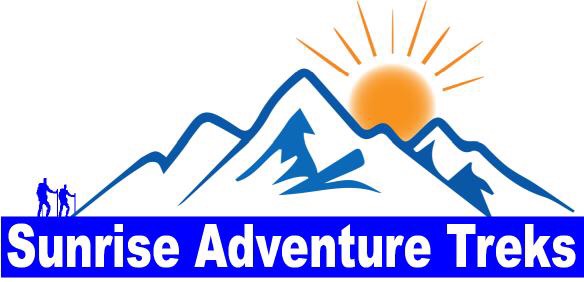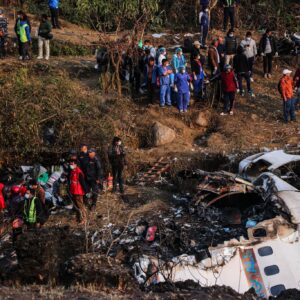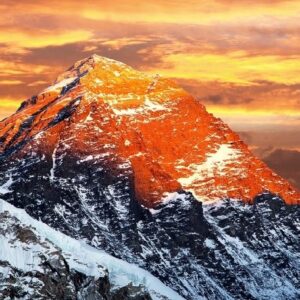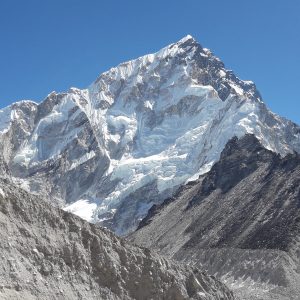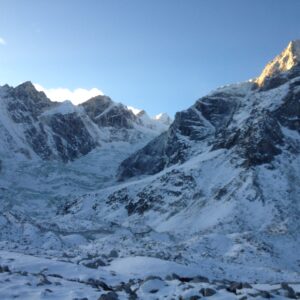
Complete Guideline to Manaslu Circuit trekking
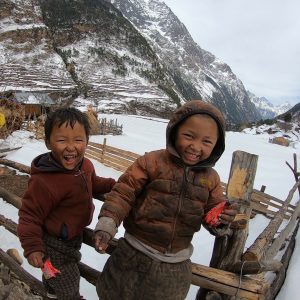 01 Jan, 1970
01 Jan, 1970
Complete Guide to Manaslu Circuit Trekking
Located in the west-central part of Nepal, the Manaslu region is an untouched and newly popular trekking destination. Named after Mt. Manaslu, which stands at 8,163 m (26,781 ft) as the eighth highest mountain in the world, the name "Manaslu" comes from the Sanskrit word "Manasa," meaning intellect or soul—hence, "mountain of the spirit." The mountain's long ridges and valley glaciers offer accessible approaches from all directions, making the Manaslu Trek one of the most remarkable in the Himalayas. Additionally, it provides an off-beaten trail experience in a relatively pristine environment.
The Manaslu Circuit Trek is a relatively new route for travelers and has been gaining popularity among adventure enthusiasts. The area is a restricted zone, adding a sense of exclusivity and challenge to the trek. Despite its growing fame, the Manaslu region remains unspoiled and offers a true off-the-beaten-path experience with its isolated and untouched trails.
The trekking route is adorned with stunning views of snow-clad mountains. Notably, Manaslu (8163 m/26,774 ft), Annapurna I (8091 m/26,545 ft), and Hiunchuli (6,441 m/21,132 ft) are particularly impressive. Other notable peaks include Annapurna South (7,219 m/23,684 ft), Ganesh Himal (7,422 m/24,350 ft), Gangapurna (7,455 m/24,456 ft), and Annapurna III (7,555 m/24,786 ft).
1. Doing the Manaslu Circuit Trek
The Manaslu Circuit Trek offers an incredible journey through natural beauty, cultural richness, and wilderness exploration. Trekking here provides opportunities to interact with local Nupri people, whose culture and lifestyle resemble that of Tibetans. The trail now includes tea houses, making it accessible and comfortable. The Manaslu region truly provides a comprehensive trekking experience for travelers from around the world.
The trek offers a chance to gather lifetime experiences, transitioning from lush tropical lower lands to scattered alpine environments. The biodiversity of the region is extraordinary, and the trek passes through the Manaslu Conservation Area, home to diverse forests and wildlife. You can also extend your trek to include the Tsum Valley, known for its rare and endangered species and its unique, hidden world.
This classic trek is less crowded and offers a genuine remote adventure. Special permission is required to trek in this controlled area, and you will need three different permits. The trail passes through traditional Tamang and Sherpa settlements, providing insight into their unique cultures and traditions. Mani walls, prayer wheels, monasteries, and Chortens add to the trail's beauty. The combination of rich cultural heritage and adventure, along with stunning views and rare biodiversity, makes this trek truly exceptional.
In summary, the Manaslu Circuit Trek is one of the most beautiful and tranquil trekking journeys in rural Nepal. It offers a unique experience with the region's ethnic culture and breathtaking mountain scenery. The adventure is unforgettable, passing through verdant woodlands and emerald pastures decorated with terrace farms and rustic settlements.
Highlights of the Manaslu Trekking
- Trekking to the restricted rural region of Nepal, the Manaslu region.
- Amazing views of Manaslu (8163 m/26,774 ft), Annapurna I (8091 m/26,545 ft), Hiunchuli (6,441 m/21,132 ft), Annapurna South (7,219 m/23,684 ft), Ganesh Himal (7,422 m/24,350 ft), Gangapurna (7,455 m/24,456 ft), Annapurna III (7,555 m/24,786 ft), and others.
- Exploring the Himalayan region valleys.
- Visiting the Manaslu Conservation Area and local monasteries.
- Less crowded and budget-friendly trek famous for its cultural aspects.
- Experiencing the Sherpa people’s culture and Tibetan lifestyle.
- Trekking through the Larke La Pass, a high mountain pass.
- Enjoying spectacular sunrise and sunset views of the Manaslu range.
2. When is the best time to do Manaslu trekking?
Spring (March, April, and May) and Autumn (September, October, November) are the best times for the Manaslu trek. These seasons are renowned as the best trekking seasons in Nepal. During Spring, temperatures are warm in the Terai region and moderate at higher altitudes. The weather is usually clear, offering spectacular views of the Himalayas and lush greenery. Spring also features the blooming of rhododendrons. Autumn provides excellent weather and aerial mountain views, and it coincides with major Nepali festivals like Dashain, Tihar, and Teej.
However, Winter and Monsoon are also suitable for trekking. These seasons offer a more solitary experience, away from the crowds. Monsoon brings heavy rain and can add difficulty to the trek, so prepare for a more adventurous journey.
3. How is the weather for the Manaslu circuit trek?
Nepal experiences four main seasons: Spring, Autumn, Winter, and Monsoon/Summer. The weather in the Manaslu region varies by season:
Spring Season – Ranges around 14-24°C (62-74°F)
Spring (March, April, and May) is the best time for trekking in Nepal, with colorful blooms and clear skies. Temperatures range from -6°C to 24°C, providing perfect conditions for the Manaslu Circuit trek.
Monsoon/Summer Season – Ranges around 16-28°C (61-82°F)
The Monsoon season, from June to August, is the hottest and wettest time of the year. Expect heavy rainfall, which makes the trail lush but also challenging. Temperatures range from 16°C to 28°C, with occasional snowfall at higher altitudes.
Autumn Season – Ranges around 12-25°C (54-76°F)
Autumn (September, October, and November) is another excellent time for trekking, with clean and fresh weather. Post-monsoon, the trails offer clear views of snow-capped mountains and stable weather at high altitudes.
Winter Season – Ranges around 6-18°C (43-64°F)
Winter (December to February) is cold, with temperatures dropping below freezing at higher altitudes. Expect cloudy weather and occasional snowfall. Proper packing is essential for trekking during this season.
4. What about the time and distance of the Manaslu round trek?
The Manaslu Circuit Trek is a restricted area trek that starts from Soti Khola and ends at Besisahar, covering a total distance of 160 km. Previously, the trek began from Arughat in the Gorkha district, covering 177 km. The trek typically takes around 2 weeks, with daily distances of 15 to 20 km, requiring about 6 to 7 hours of trekking each day.
5. How difficult is Manaslu trekking?
Manaslu Trek is one of the most challenging treks in Nepal. It takes you through the remote villages of the Himalayan region, making it more adventurous and exciting. The Manaslu Circuit Trek is considered somewhat more difficult than other trekking destinations in Nepal due to its high altitude, cold weather, and slippery routes. Additionally, the trek can be challenging for beginners, especially in the first few days. The highest point of the trek is Larkya La Pass, which is one of the dramatic passes in the Himalayas of Nepal. All these factors contribute to making the Manaslu Circuit Trek a moderate to difficult trek.
6. What are the trekking routes of Manaslu trekking?
There are different trekking routes for the Manaslu region. Some of them are listed below:
- 1. Manaslu Circuit Trek
- 2. Manaslu and Tsum Valley Trek
- 3. Manaslu and Narphu Valley Trek
- 4. Manaslu with Annapurna Round Trek
7. How is the altitude sickness of the Manaslu Circuit Trek?
Manaslu Circuit Trek is a high-altitude trek with the highest point being Larkya La Pass at 5,106 m/16,752 ft. Crossing this altitude poses a significant challenge, and altitude sickness can occur. As altitude sickness is common while trekking at high altitudes, it is important to be careful about your health. Step slowly and enjoy the enchanting environment of the remote Himalayan region to mitigate the risks of altitude sickness.
8. What types of food and drinks are available on the Manaslu Circuit Trek?
As Manaslu Circuit Trek is a remote region, you will not find luxury hotels and lodges. However, it has transitioned from a camping trek to a teahouse trek, offering a variety of food options. The most famous dish is Dal Bhat, a meal consisting of steamed rice, vegetable curry, and lentil soup. Both vegetarian and non-vegetarian options are available. You can also enjoy healthy and organic food and drinks, including both hot and cold beverages.
9. What is the packing list for the Manaslu Circuit Trek?
Manaslu Circuit Trek is a high Himalayan trekking destination, so proper packing is essential. You will be trekking for about 6 to 7 hours each day. To succeed in the trek and handle various difficulties, ensure you pack all necessary items and gear. Avoid packing unnecessary items to prevent extra weight in your luggage. Pack according to the season you are trekking in. For detailed information on the packing list, check the Sunrise Adventure Trek site.
10. How much does the Manaslu Trek package cost?
Budget is an important factor when planning any trip. The cost of the Manaslu trek package generally includes bus/flight tickets, permits, lodge accommodation, meals, guide, and porter costs. The package cost varies depending on the type of services you choose. Typically, the cost ranges from $1,200 to $2,000 for an average 2-week trek. You can select a package based on your budget and interests. The Manaslu Circuit Trek cost is similar to the Everest Base Camp Trek cost.
11. What types of accommodations are available on Manaslu Circuit Trek?
Manaslu Circuit Trek is regarded as a tea house trek. During the trek, you will find various accommodations throughout the area. Although luxurious 4-5 star hotels are not available along the trek, you can enjoy such accommodations in Kathmandu. The tea houses on the Manaslu Trek offer basic facilities for food and rooms. With increasing remoteness and altitude, amenities like wifi and hot showers may not be available. The rooms are basic, often with just one or two beds and minimal furniture. However, you no longer need to camp during the Manaslu trek, as tea houses are now available throughout the route.
12. Is there any age limit for Manaslu Trek?
Basically, there is no specific age limit for Manaslu trekking. Any physically and mentally fit trekker can join the trek. The routes in the Annapurna region are generally easier and more accessible. However, trekkers above 10 years and below 70 years are recommended for trekking in the Himalayan region of Nepal, as children under 10 and individuals over 70 may not be considered physically and mentally fit for the trek. The suitability for the Manaslu trek depends on individual interests and physical & mental fitness.
13. Are there ATM and money exchange facilities available on the Manaslu trek?
Having national currency is crucial for international tourists in Nepal. On the Manaslu Circuit trek, you will need Nepalese currency for exchanging goods and services. There are no ATMs or money exchange facilities along the trek, so it's important to withdraw enough cash from Kathmandu before starting the trek. Many ATMs and money exchange services are available in Kathmandu. It is best to carry sufficient Nepali currency, as all transactions in the trek area are in Nepali rupees.
14. Is drinking water and beverages available during the Manaslu trek?
If you are concerned about the availability of drinking water and beverages during the Manaslu Circuit Trek, there is no need to worry. Both drinking water and beverages are available along the trekking routes. You can purchase bottled water or use tap water with purification tablets. Boiled water is also available at tea houses, and the cost of bottled and boiled water is similar. Compared to city areas, the water in the mountain areas is generally clean and drinkable, though using water purification tablets is advisable. Additionally, both alcoholic and non-alcoholic beverages can be found at tea houses, with prices varying depending on the location and altitude.
15. How about tips for guides and porters during the Manaslu circuit trek?
Tipping is not very common in Nepal, but travelers often tip guides and porters for their hard work. Having a guide and porter on the Manaslu circuit trek enhances the experience and comfort of the trek. Tips are considered a gesture of appreciation for their service. While tipping is not mandatory, it is generally recommended to tip about 10% of the tour cost or around $10 per day per person based on the level of satisfaction with their service.
16. How are guides and porters on the Manaslu Round Trek?
Guides and porters are essential for a successful trek in Nepal, especially in restricted areas like Manaslu, where a licensed trekking guide is mandatory. Your guide will also manage the porters. Guides and porters provided by reputable agencies, such as Sunrise Adventure Trek, are well-trained, experienced, and friendly. They play a crucial role in ensuring a smooth and enjoyable trekking experience.
17. What about travel insurance for the Manaslu trek?
Travel insurance is essential for anyone embarking on an adventure in the Himalayas. It provides protection in case of emergencies and can also save you from significant financial loss. While trekking agencies usually cover their guides and porters with insurance, travelers need to arrange their own insurance. You can either purchase travel insurance in your hometown or buy it in Kathmandu. All guides and porters from Sunrise Adventure Trek have good travel insurance. Travelers should ensure their insurance covers high-altitude trekking and any potential emergencies.
Finally,
The Manaslu Circuit Trek is one of the most adventurous treks in the remote Himalayan region of Nepal. It offers precious and memorable moments, making it a potentially life-changing journey. The trek showcases breathtaking scenery, striking Himalayan passes, and encounters with local culture. With organic, delicious food and basic tea house facilities, this trek provides an experience that surpasses expectations.
